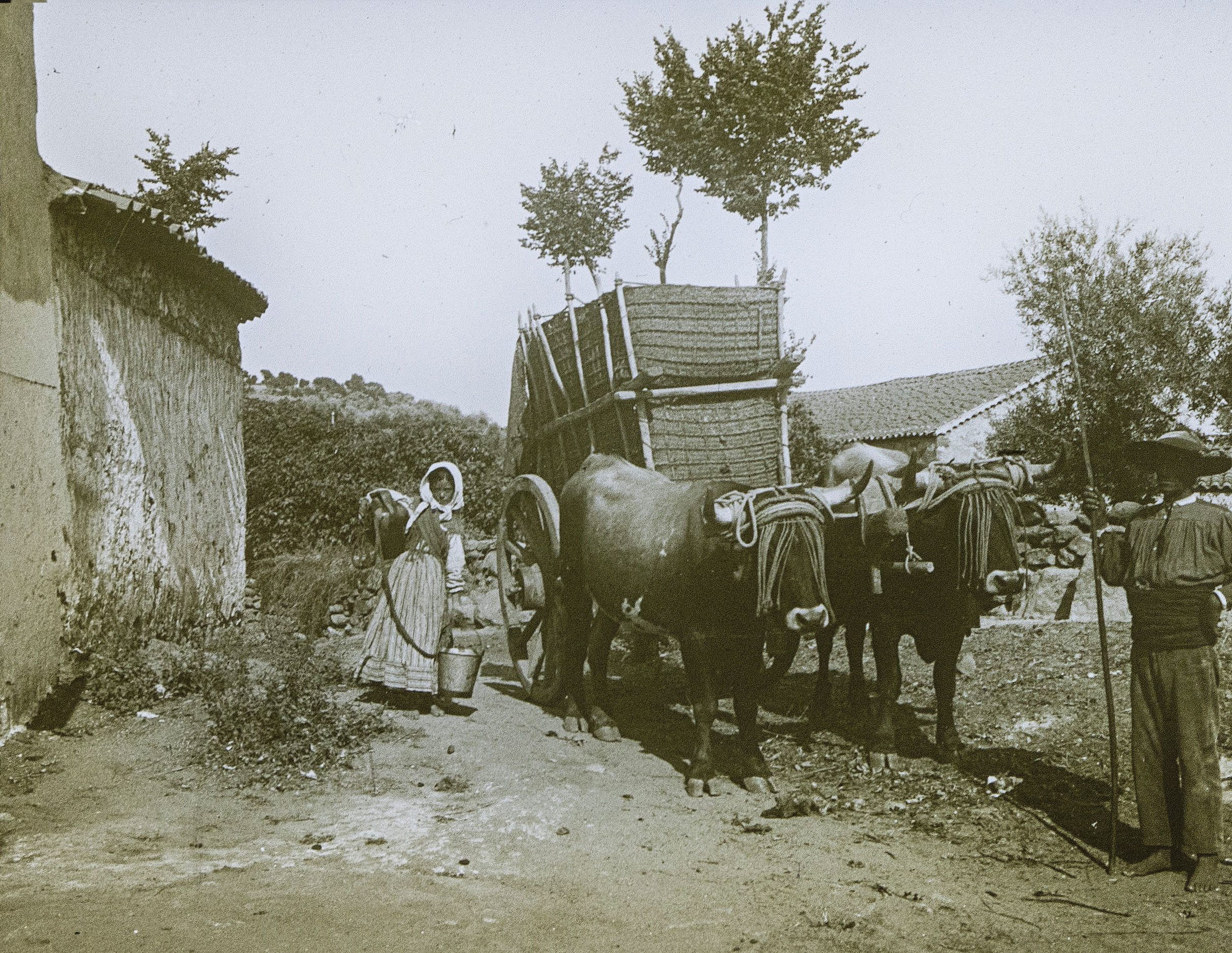Unusual Births in Sotillo de la Adrada.
I. Cycles of Life and Death in a Mountain Village
In the Sotillo of the mid-19th century, most children were born in the family home, with the mother attended by some combination of the village midwife, any godmothers or confidantes sufficiently nearby, and her close relatives. Most of the time, the celebrant of the subsequent baptism would content himself with recording only the date and the names of the parents, grandparents and godparents in the baptismal record.
Some cases, however, didn’t follow this pattern. On occasions the priest would see fit to go into greater detail in one way or another, giving us a fleeting glimpse of the broader trials and tribulations of contemporary life. On 31 October 1858, for example, the parish priest “bestowed solemn baptism upon a baby girl born this morning in a haystack”. This child, María del Carmen, the priest goes on to record, was the legitimate daughter “of a gypsy by the name of Juan Bustamente, of Almenara, province of Valencia, and Juana Magallares, of Navalcarnero, Ávila”.
Returning to the subject of the taking-in of foundlings, Sotillo didn’t only take charge of city children: some of the exposed infants fostered there very probably came from the village itself. On 22 February 1841, the priest gave solemn baptism to an infant girl “found yesterday morning at seven o’clock, hanging at the door of Justo Juárez’s house (in a rush basket), appearing to be three or four days old and with a note saying she had been given emergency baptism.” He named her Petra de la Yglesia. A similar example was recorded on 18 July 1848, when Father Andrés Vadillo del Tejar baptised a girl with the name of Carmen de la Santa Trinidad, attesting that she “appeared on the morning of the 15th suspended in the doorway of Paula Díaz, widow of Juan Peinado” and who was three or four days old.
It was said in the villages that a baby left in a doorway would in many cases have been “born in the same house”, and that the woman who offered to nurse and adopt it was sometimes in fact its real mother. This would have been “having it both ways”, as in the story of Jochebed, who was mother and wet-nurse alike to her “foundling child” Moses, pulled from the waters by the Pharaoh’s daughter.
In the first of the two cases given above it could even be that, after giving the newborn its necessary first ministrations, by dumping the baby girl at his door the mother had wanted to cajole the father out of dodging his paternal responsibilities: “When you’ve made your bed, you’d better lie in it”, would have been the snarky comment of a character in a Lope de Vega comedy.
The Casas Cuna, or foundling homes, were a particularly urban phenomenon, emerging from an environment of ever-greater anonymity and weakened familial bonds. They filled the gap that appeared whenever a maid, servant or workerwoman suddenly found herself hopelessly far away from the support and protection of her family, which was no longer at hand to help sort through the more delicate problems of coexistence. [Wolfram Aichinger.]

